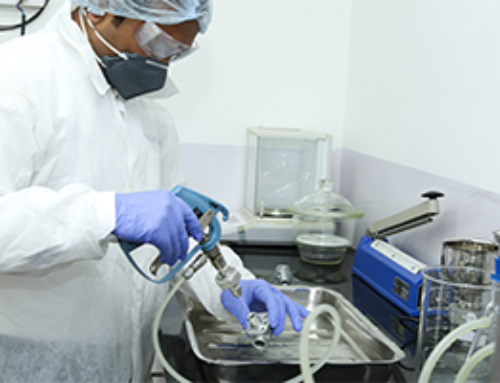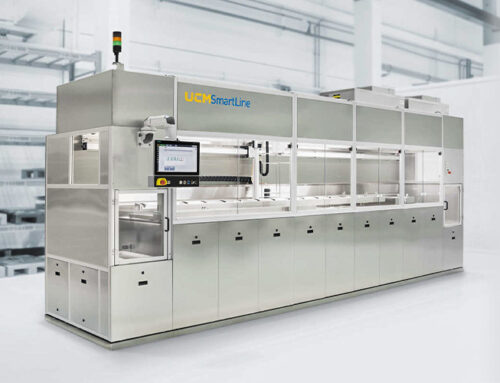Table of Contents
- Introduction
- Production-to-Cleaning Workflow
- Deburring Strategies
- Adapting to Manufacturing Changes
- Batch Optimization
- Basket Selection
- Contaminant-Based Cleaning Processes
- Spotting Resolution
- Pre-Dipping Wet Parts
- Intermediate Cleaning Practices
- Fine Industrial parts Cleaning Machine Usage
- Maintaining a Clean Environment
- Minimizing Human Contact
- Clean Shipping Packaging
- Education for Personnel
- Equipment Maintenance Best Practices
- Regulatory Considerations
- FAQs
Introduction:
Achieving optimal cleanliness results in parts cleaning is crucial for manufacturing processes. Ecoclean India presents a set of practical measures to significantly enhance your parts cleaning outcomes. These strategies aim to improve cleanliness, boost washer efficiency, reduce costs, and safeguard equipment against issues related to misuse and wear. While the quality of parts cleaning equipment is paramount, external factors upstream and downstream also play a pivotal role in the overall effectiveness of the process.
1. Streamline Production-to-Cleaning:
Efficiently move parts from the production line to the cleaning process to avoid storing, especially for parts manufactured with coolants. Storing parts can lead to drying the coolant on part, making cleaning more challenging and may lead to longer cycle times and increased costs.
2. Deburr Before Cleaning:
Prioritize deburring before cleaning to ensure the removal of burrs, which might not be effectively addressed by a regular cleaning washer. Burrs left on parts can interfere with downstream processes and pose challenges for end customers.
3. Assess Manufacturing Process Changes:
Examine if changes in the manufacturing process are impacting cleaning results. Factors such as a change in coolant types or the use of dull tooling can affect cleanliness. Addressing these issues can lead to improved cleaning outcomes.
4. Optimize Batch Size:
If cleanliness is compromised with a basket-style washer, consider reducing the number of parts in each batch. This allows for better access to parts by the cleaning media, potentially improving cleanliness despite a slight decrease in throughput.
5. Choose Stainless Steel Baskets:
Utilize stainless steel round wire baskets instead of galvanized perforated sheet metal baskets. The latter has reduced open areas, limiting cleaning media access and deflecting ultrasonic waves, resulting in less effective cleaning.
6. Match Contaminants to Cleaning Process:
Tailor the cleaning process based on the composition of contaminants. For oil-based cutting fluids, use a hydrocarbon cleaning process; for water-based contaminants, opt for aqueous parts cleaners. Consider a process with modified alcohol for mixed oil and water-based coolants.
7. Address Spotting Issues:
Salts and minerals from the water might from sports on parts. Wiping with a clean cloth post-washing is not desirable. Minimize spotting caused by mineral residue by using demineralized water in water-based machines or ensuring water-free parts in vapor degreasing machines.
8. Pre-dip Wet Parts:
If parts have water or coolant on them, dip parts into a hydrocarbon bath immediately after machining and before loading the basket in cleaning machine. This can improve overall cleaning efficiency.
9. Implement Intermediate Cleaning:
In multi-stage production processes, consider cleaning parts between manufacturing phases, especially if different media or coolants are used. Ensure compatibility with the selected Industrial parts cleaning machine.
10. Dedicated Industrial parts Cleaning Machines for precision cleaning:
Reserve fine Industrial parts cleaning machines exclusively for precision cleaning applications with stringent cleanliness specifications. Misuse of precision cleaning machines for general purpose cleaning can lead to dirt accumulation and degrade the machine’s effectiveness.
11. Maintain a Clean Environment:
Parts may get dirty again in a plant with atmospheric particulates. Consider a clean room and direct transportation from the machine to the clean room via conveyor.
12. Minimize Human Contact:
Avoid human contact with clean parts, as humans can transfer contaminants unknowingly. Handlers should wear lint-free gloves, hair nets, and work coats or bodysuits.
13. Ensure Clean Shipping Packaging :
Pack parts in protective plastic to prevent new contaminants during the packing and shipping phase. Check packaging crates or boxes for debris and particles.
14. Educate Personnel :
Provide basic training on cleaning principles and best practices for operators, handlers, and maintenance personnel. This can significantly contribute to overall production improvement.
15. Prioritize Equipment Maintenance :
Regularly schedule maintenance for Industrial parts cleaning machines, especially aqueous parts washers. Inconsistent maintenance can lead to unseen issues affecting downstream processes and result in part rejects.
16. Stay Informed on Regulatory Impacts :
Be aware of regulatory impacts on cleaning chemicals, as some may be phased out by environmental agencies. When purchasing a parts washer, involve the cleaning media supplier to ensure compatibility with current and future regulations, especially in regions with specific standards.
Frequently Asked Questions (FAQs)
Q1: Why is it essential to avoid storing parts before cleaning?
A1: Storing parts, especially those manufactured with coolants, can result in coolant drying on the parts. This makes cleaning more challenging, leading to longer cycle times, potential spotting, and increased manufacturing costs.
Q2: How can we address burrs on parts effectively?
A2: Burrs should be addressed before the cleaning process. Special applications for deburring, such as brushes or high pressure, must be employed to ensure the removal of burrs that a regular cleaning washer might not effectively handle.
Q3: How can changes in the manufacturing process impact cleaning results?
A3: Changes in coolant types or the use of dull tooling can interfere with the cleaning operation. It’s crucial to assess these changes and make necessary adjustments to maintain optimal cleaning outcomes.
Q4: Why is it recommended to reduce the quantity of parts in each batch?
A4: Loading fewer parts into a basket-style washer may decrease throughput slightly but can improve cleanliness by allowing more cleaning media to access the parts.
Q5: Why is the choice of baskets important in parts cleaning?
A5: Stainless steel round wire baskets are recommended over galvanized perforated sheet metal baskets. The latter has reduced open areas, limiting cleaning media access and deflecting ultrasonic waves, resulting in less effective cleaning.
Q6: How can one ensure clean shipping packaging?
A6: To avoid introducing new contaminants during the packing and shipping phase, it is best to wrap the parts in protective plastic. Additionally, check packaging crates or boxes for debris and particles.
Q7: Why is it crucial to involve the supplier of cleaning media when purchasing a parts washer?
A7: Some cleaning chemicals are being phased out by regulatory agencies. Involving the supplier ensures compatibility with current and future regulations, reducing the risk of maintenance issues and unexpected costs.
This comprehensive guide by Ecoclean India provides detailed insights into optimizing parts cleaning processes, addressing common challenges, and ensuring consistent high-quality results in manufacturing.







